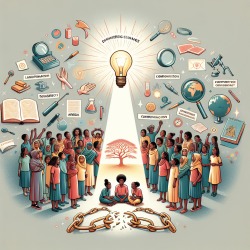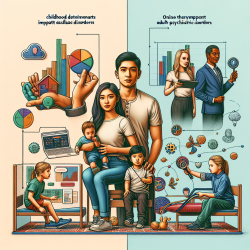Introduction
Intimate Partner Violence (IPV) remains a pervasive issue globally, affecting millions of women and girls, particularly in conflict-affected regions. The recent study titled Comparing Changes in IPV Risk by Age Group over Time in Conflict-Affected Northeast Nigeria sheds light on the differential impacts of conflict on adolescent girls and young women (AGYW) compared to older women. This blog explores how practitioners can leverage these findings to enhance their skills and improve outcomes for vulnerable populations.
Understanding the Research
The study utilized data from the Nigeria Demographic and Health Surveys (DHS) conducted in 2008 and 2018, focusing on six Boko Haram-affected states. It highlighted a significant increase in emotional and sexual IPV among AGYW compared to older women, emphasizing the need for youth-focused interventions. The research underscores the vulnerability of AGYW in conflict settings, where social protection systems are often weakened, exacerbating the risk of violence.
Key Findings
- A significantly higher proportion of AGYW reported experiencing emotional and sexual IPV in 2018 compared to 2008.
- Sexual IPV increased by six percentage points more among AGYW than older women.
- The study highlights the need for targeted interventions to address the unique challenges faced by AGYW in conflict zones.
Implications for Practitioners
Practitioners working in conflict-affected areas can use these findings to tailor their interventions. Here are some actionable steps:
- Develop Youth-Focused Programs: Design interventions that specifically address the needs of AGYW, considering their increased vulnerability to IPV.
- Enhance Data Collection: Encourage further research to gather more comprehensive data on IPV in conflict settings, which can inform policy and practice.
- Collaborate Across Sectors: Work with health, justice, and social services to create a multisectoral response to IPV, ensuring a holistic approach to support victims.
Encouraging Further Research
The study's findings open avenues for further research into the dynamics of IPV in conflict settings. Practitioners are encouraged to explore the following areas:
- Longitudinal Studies: Conduct studies that track IPV trends over time to understand the long-term impacts of conflict on different age groups.
- Intersectional Analysis: Examine how factors such as ethnicity, socioeconomic status, and education level intersect with age to influence IPV risk.
- Intervention Efficacy: Evaluate the effectiveness of existing IPV interventions in conflict zones and identify best practices for replication.
Conclusion
The study provides critical insights into the increased risk of IPV among AGYW in conflict-affected areas. By implementing targeted interventions and encouraging further research, practitioners can play a pivotal role in reducing IPV and improving outcomes for vulnerable populations. For those interested in delving deeper into the research, the original paper offers a comprehensive analysis of the findings.










